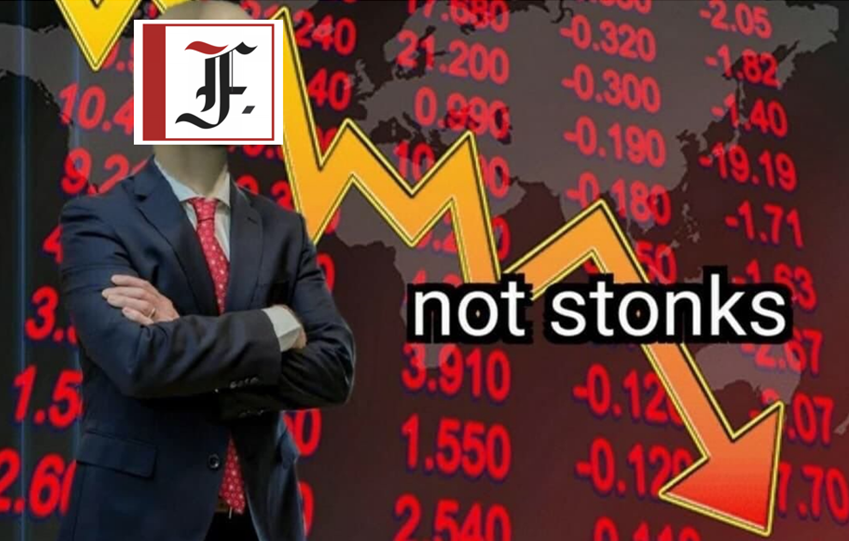News
SVB situation in Lehman’s terms…oh I mean Layman’s terms sorry

You’ve probably heard by now that a bank you probably have nothing to do with, Silicon Valley Bank (SVB), failed and had to be bailed out by the Government (kinda). But banking is confusing and everyone is always trying to sound super smart about it so we’re going to break it down in Lehman’s terms…oh sorry I mean layman’s terms.
What happened at SVB?
Long story short: SVB ran out of cash, didn’t diversify their holdings and had a real life bank run.
Every single investor including average American retirees know that the number one rule of money management is diversification. SVB did not hold to this rule in any aspect of their business. Basically, the bank was relying on cash flows from commercial customers who were all in a singular particularly volatile industry (start-up tech). Several factors made deposits lower including increased interest rates and therefore lower investor appetite in new projects (the higher the interest rate, the more expensive it is to borrow. The more expensive it is to borrow, the less likely it is investors will borrow money to put into new projects). Further, the investments SVB had made to grow money with the deposits were primarily in long term bonds which are famously illiquid investments meaning you cannot easily convert them to cash and are also very sensitive to interest rates. So when SVB tried to sell their bonds to make cash quickly, they actually lost money on them. When investors caught wind of this because of an emergency stock sale, it caused panic and a bank run which completely emptied SVB reserves and shut them down.
Even though interest rates played a part, most analysts believe that the bank failure was totally due to mismanagement by leadership and had not many systemic causes or effects.
A real life bank run?
Yes, SVB shut their online banking down as the crisis emerged and business leaders from all over showed up in person to SVB to move their money. SVB locked their doors. The police had to be called and ultimately the people were sent away and the bank was forced to close down all operations and was then considered a failed bank.
Who was the management that caused the problems?
Two executives from SVB previously worked for the notorious Lehman Brothers who failed catastrophically in 2008 causing the biggest financial collapse in America since the Great Depression and changing the face of American banking regulation. In fact, one of the executives at SVB was the Chief Financial Office (CFO) of the Lehman Brothers operation aka the guy arguably the most responsible for its collapse. Kind of a weird hire if you ask me, though, we can’t know that it was him who made the decisions that lead to SVB’s closure.
It appears as though the Board at SVB has known that there were problems with their risk profile for at least 15 months. The company hired a Chief Risk Officer who left for undisclosed reasons only two months later and has since April of 2022 operated without a Chief Risk Officer.
CEO Greg Becker sold $3.6 million in shares days before the collapse. SVB’s CFO and CMO also sold off their shares days before the collapse. Bonuses were paid to employees hours before the FDIC seized legal control of the company. The facts are unclear as of today, but it kinda seems like the leadership of SVB is unlikely to keep the millions they made on those stock sales even if they avoid criminal charges since there will maybe be civil penalties for those actions.
Is there going to be a financial crisis because of this?
It seems like probably not. There was some concern over the weekend that the sheer mention of bank failures and bank runs would cause more to occur. But because SVB was unique in their mismanagement (serving only a niche community, no diversity in outside investments), the damage will likely remain limited to banks like SVB which seem to account for only a handful.
Did the Government bail out SVB?
Yes and no. The FDIC, FED and Treasury unanimously voted to consider the event “systemically important” to trigger FDIC flexibility and allow the agency to cover all the deposit money so that those using SVB do not lose their money. But they did not agree to any kind of financial overhaul which would keep SVB operational at this time. Shareholders and bondholders are not going to have their losses covered like the bailouts of 2009. The money to cover the depositors will come from user fees paid by banks into the FDIC system, not from the Treasury general fund (aka the taxpayers). The FDIC will sell off the remaining SVB assets to cover the deposits as well. Most analysts believe that it would be a mistake for the Federal government to totally cover everyone involved in this failure as it would not encourage bankers to make wise investment choices going forward. If no one can ever lose money – what is the point of rational and safe banking behavior?
